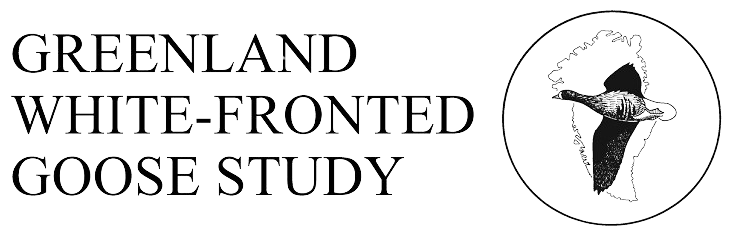Status
This is no longer a discrete feeding area and roost site complex, but formerly of international importance (part of R&O 43) holding as many as 200-250 birds (see figure). Geese fed in adjacent fields and flight to the loch to roost. Only one individually marked bird has been seen at Scarmclate, but it is generally felt that flights between here and the Loch of Mey/Heilen complex identify these birds as part of the same group. The rather erratic nature of the counts from Scarmclate would tend to suggest that this was the case. Although up to 110 birds have been seen at the site, the flock using the site generally numbered 60-80 and during intensive survey of February/March 1985, clearly constituted fewer birds than were using the Loch of Mey/Loch Heilen area at the same time. It therefore seems likely that the birds using this area were a sub-group of those using sites further north, but which were consistent in their exploitation of feeding areas and a separate roost. For whatever reason, it would appear that these feeding patterns have been abandoned in recent years and this group no longer represents a discrete group which it is assumed have amalgamated with the Mey/Heilen group of birds.
Maximum winter counts:
Breeding success: There are no consistent production data from this site.
Feeding sites and habitat: Mainly intensively managed farmland with cereals and reseeded grassland, although some rough pasture remains. In the centre of the county, the main feeding sites associated with this group are the pasture and arable fields round the loch and to the north-west. It seems highly likely that these birds may interchange with the Loch of Mey/Loch Heilen flock described earlier, since birds feeding at Lochquoy (ND2064), Hoy (HD2062) and Camster (ND2061) have been watching flying to Loch Heilen to roost. Although used frequently by the geese in the 1970s and 1980s, none have been reported feeding in these areas since the late 1980s. For this reason, this flock profile does receive the treatment of others elsewhere.
Roosting sites: A mesotrophic loch with rich marginal vegetation, large numbers of wintering wildfowl use the loch. Although the geese using the feeding areas in the vicinity have been seen flighting to Loch Heilen, the loch was the consistent roost for the geese frequenting central Caithness in the 1970s and 1980s, certainly this was the case during intensive survey of February and March 1985. Loch of Toftinghall (ND1952) has also been used as a roost, on occasions used by up to 152 birds, suggesting the entire Loch of Mey/Loch Heilen flock has used the site as a roost. It is a base-poor loch with little marginal vegetation planted with conifers on the western side in the 1980s which may have caused disturbance. There is a large area of open peatland to the south with pool and hummock topography which may have been used for feeding.
Habitat change: Unknown
Aircraft disturbance: None known
Hunting disturbance: At the time of their occurrence, licensed Greylag Goose shooting was occurring on farmland to the north of Loch Scarmclate, and morning shooting in particular was used to disperse birds away from the land under pressure and there was some shooting of wildfowl and some Greylag Geese on the loch.
Agricultural disturbance: Some regular agricultural disturbance occurred and anglers fishing the lochside will also have disturbed birds at the site.
Site safeguards or disturbance refuge: Loch Scarmclate is an SSSI and a component of the Caithness Lochs SPA and Ramsar Site.
SNH Natural Heritage Zones/Area: Orkney and Northern Caithness
Threats: Greylags are shot in the area in spring and this usually disperses Whitefronts away from the loch in the morning. The loch is also much used by anglers.
Linkages with other sites:
2RT was caught at Wexford in 1985/6 and wintered there in 1986/7 (last seen 3rd March 1987) but was seen at Oust on 5th April 1987. It was seen at Loch of Mey and Oust in winter 1987/8, Loch Heilen and Loch of Mey in 1988/9 and at Loch of Mey, Loch Scarmclate and Charleston in winter 1989/90, the last year it was seen. This bird is the only one to be seen at Scarmclate, but given that it also shifted between the Mey/Heilen and Westfield resorts, this bird may have been unusual in its behaviour of shifting between flocks and therefore does not necessarily prove regular interchange between the three feeding and roosting complexes (and see notes on the lack of site interchange at the other flocks).
References
Laybourne, S. & Fox, A.D. (1988) Greenland White-fronted Geese in Caithness. Scottish Birds 15: 30-35.
